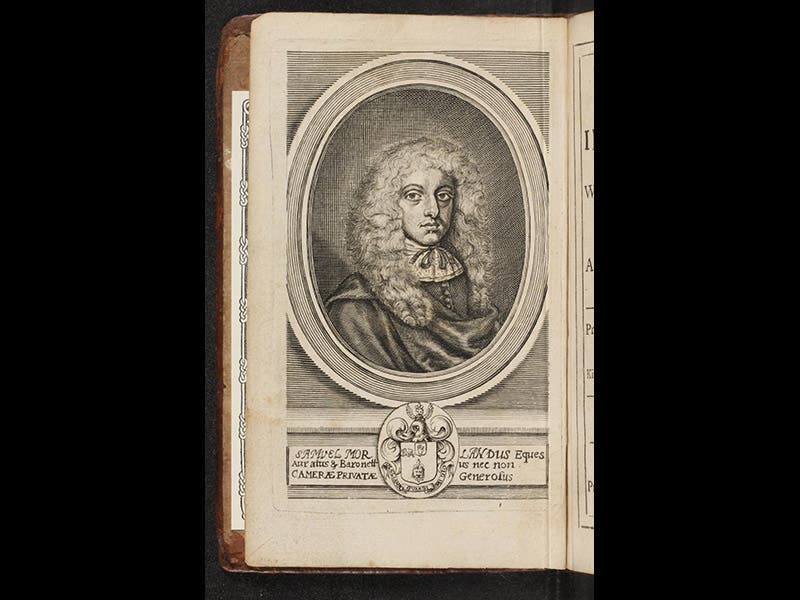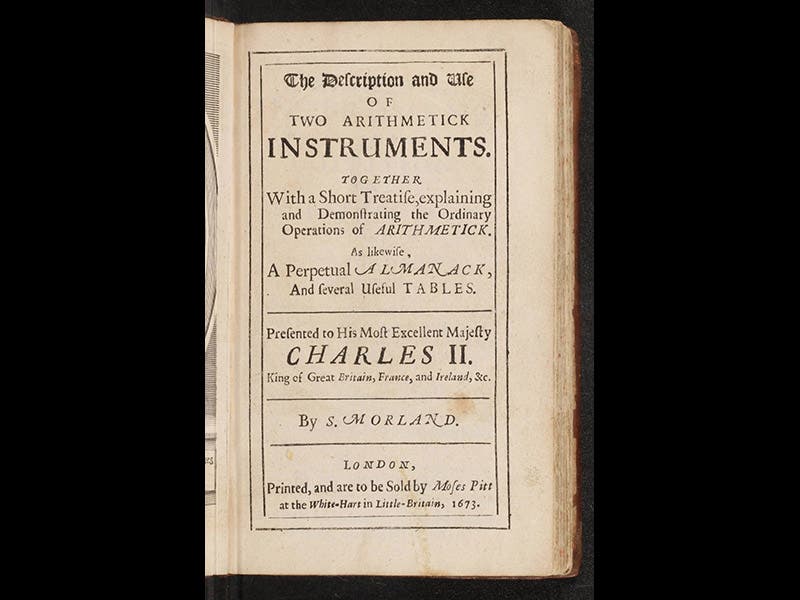Scientist of the Day - Samuel Morland
Samuel Morland, an English inventor and courtier, died Dec. 30, 1695, at age 70. In the 1660s, Morland invented several calculating machines, and he described them in his book, The Description and Use of Two Arithmetick Instruments (1673), which we have in our History of Science Collection. Morland did not invent the calculator, nor is this the first book on calculating devices. But it is only the second book in English on such machines, and Morland’s calculators, which he actually built and sold for income, are both attractive and ingenious. One of his “Two Arithmetick Instruments” was quite sophisticated, since besides being capable of addition, it could multiply, divide, and do square root functions. But the other calculator is more intriguing; it was intended to perform sums of English currency. Back then, England used farthings, pennies (containing four farthings), shillings (worth 12 pence) and the guinea (equal to 20 shillings). Morland's adding machine thus had to have little wheels with 4, 12, and 20 divisions; each wheel was turned with a stylus much like that for a modern PDA, and the sums were accumulated with a series of dials at the top
Morland’s calculators were small, not much bigger or thicker than a modern PDA. His book, not much bigger than one of his calculators, sits in our vault, right next to the first English book on calculating devices, an even tinier book by John Napier, the Rabdologiae (1617). The illustrations above are all from Morland’s book, showing his currency calculator (first image), his multiplying device (third image), the frontispiece portrait, based on a painting by Peter Lely (second image), and the title page of the book (fourth image).
Dr. William B. Ashworth, Jr., Consultant for the History of Science, Linda Hall Library and Associate Professor, Department of History, University of Missouri-Kansas City










